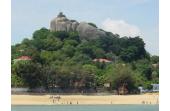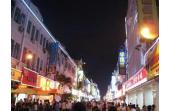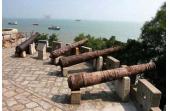Xiamen
- Things to do
-
- Photo(70)
- Tips&article(192)
- Make it Happen
- Map
-
loading...
Xiamen is a relatively prosperous small city on the southeast coast of China across from Taiwan. About two million people live there. In 2006, a survey named it China’s second most livable city. It has one of China’s cleanest and most enjoyable living environments. It benefits from the ocean air and from investment from overseas Chinese and Taiwanese. It had long been an important port city for both Chinese empires and foreign empires because the natural harbor in the city is good and very deep. Though it isn’t a big city in China, both its port and its airport are among China’s top twelve. It has a global transportation network and an internationalized financial system with foreign banks and investment playing an important role in the economy. The relative prosperity will make travel in the city more comfortable, and the many historical sites, some beaches and park areas, and Gulangyu Island that is a pedestrian only area are the highlights of travel to the city.
Detailed Description:
The city is composed of two islands called Gulangyu Island and Xiamen Island, some islets, and a larger region along the Jiulong River. The city government administers an area of 1,565 square kilometers that is divided into 6 districts. The two districts on the islands have the most interesting architecture due to the many foreign-built buildings, Hulishan Fort, and South Putao Temple. The two islands were foreign enclaves after the British forced the Chinese to open it as a treaty port in 1843. This is the reason Xiamen Island and Gulangyu Island have lots of buildings built by people from around the world.
Not only have foreigners been coming to Xiamen, but people from the Xiamen area have been moving to other countries for hundreds of years so that it is said that 400,000 Chinese living overseas are of Xiamen descent. The Qing Dynasty rulers even tried to prevent Fujian people from leaving. Now, the overseas Chinese are investing heavily to build Xiamen’s industries and businesses including a huge mall called SM Xiamen that has a parking lot for 1,100 cars that opened in 2001. It was built by a Filipino-Chinese businessman. Wal Mart has a mega-store in the mall.
Xiamen is an ideal place for holding all sorts of international conferences and exhibitions. There is an annual tradeshow for investment and trade called the China International Fair for Investment and Trade (CIFIT). It is one of the largest in China. CIFIT is held in Xiamen every September from the 8th to the 11th. There are a lot of other conferences held, and the government wants to promote the city as a place for holding international conferences. Xiamen is working toward the goal of becoming a famous city for international conferences and exhibitions.
Xiamen History
The port became a major seaport in the Song Dynasty. The natural harbor is deep, and can handle the biggest ships of over 100,000 tons. To defend the island from Japanese, Prince Zhou Dexing enclosed Xiamen Town with 110 kilometers of heavily fortified wall. The ancient wall was destroyed in 1928, but you can see remnants in some places like Xiamen University. This wall was used to keep out the Japanese, but it could not keep out the Europeans however. They came as traders initially.
Then, after the Mongols invaded and set up the Qing Dynasty, a famous person named Koxinga who was born in 1629 in Hirado, Japan set up a territory in the area outside Qing control. He fought against the Qing troops and also drove the Dutch from Taiwan. When he had control, the territory’s name was called Siming that means “Remember the Ming.
” It is now the name of a district in Xiamen. The Dutch had colonized Taiwan. So on April 21, 1661, he set sail with tens thousands of troops (perhaps 25,000), and the Dutch surrendered on January 27, 1662. He is famous in both China and Taiwan for these victories. Koxinga died soon after this, and then the Qing Dynasty took over the Xiamen area.
In 1902, the area had a local government composed of foreigners. There were foreigners of many countries in the International Settlement, and fourteen countries had consulates there. In 1939, the Japanese wanted to invade the area, but couldn’t due to the presence of foreign troops. In 1941, the Japanese controlled the area.
In 1980, it became one of China’s first four special economic zones where foreign investment and international trade was allowed. After this, the city became prosperous. The city relies heavily on foreign trade and investment for growth. It is a vital port for trade with Taiwan and is an important passage for Taiwanese to visit China.
Tips & articles
|
|
|
forum discussion
|
|
|












